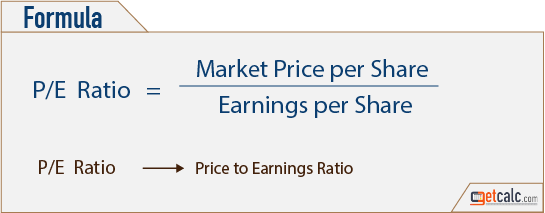
There is some evidence, however, of an inverse correlation between the P/E ratio of the S&P 500 and future returns. The most common use of the P/E ratio is to gauge the valuation of a stock or index. The higher the ratio, the more expensive a stock is relative to its earnings.
Can price to free cash flow be negative?
Learn financial statement modeling, DCF, M&A, LBO, Comps and Excel shortcuts. To account for the fact that a company could’ve issued potentially dilutive securities in the past, the diluted share count should be used — otherwise, the EPS figure is likely to be overstated. Despite discussing the limitations in the ratio, it’s important to note there are global factors that affect Price to Earnings ratios.
How Do I Calculate the P/E Ratio of a Company?
The P/E ratio can also standardize the value of $1 of earnings throughout the stock market. Trailing 12 months (TTM) represents the company’s performance over the past 12 months. Another is found in earnings releases, which often provide EPS guidance.
What if a company’s P/E ratio is lower than its industry average?
After selling lemonade, you have some money left over after paying for lemons, sugar, and cups. This leftover money is like free cash flow—it’s the cash you can use for other things, like buying more supplies or saving for a new stand. While the P/E ratio is frequently used to measure a company’s value, its ability to predict future returns is a matter of debate. The P/E ratio is not a sound indicator of the short-term price movements of a stock or index.
- The current year is typically used in conjunction with the previous year since this provides enough information for comparison.
- P/E ratio, or the Price-to-Earnings ratio, is a metric measuring the price of a stock relative to its earnings per share (EPS).
- For instance, if a similar company has a P/FCF of 15, the first company might be seen as a better investment because it has a lower ratio.
- As such, one should only use P/E as a comparative tool when considering companies in the same sector because this is the only kind that will provide worthwhile results.
- The P/E Calculator is a nice tool to calculate and to understand a valuation metric that can help sift through companies and shortlist undervalued companies.
The price-to-earnings ratio, or P/E ratio, helps you compare the price of a company’s stock to the earnings the company generates. This comparison helps you understand whether markets are overvaluing or undervaluing a stock. While P/E ratios provide important insights into the value of stocks, investors should be cautious about making decisions based on P/E ratios alone.

Search companies to calculate price to earnings ratio and compare to others.
Hence, it’s sometimes called the price multiple because it shows how much investors are willing to pay per dollar of earnings. If a company trades at a P/E multiple of 20x, investors are paying $20 for $1 of current earnings. Analysts and investors review a company’s P/E ratio to determine if the share price accurately represents the projected earnings per share. P/E ratios of cyclical businesses do not reflect the cyclical nature of certain businesses like commodities. Thus P/E becomes an unreliable metric when evaluating cyclical stocks Other minor drawbacks include backward looking measure, no integration of negative earnings etc. Conversely, a P/E ratio higher than the industry average may suggest the price is overvalued.
Some say there is a negative P/E, others assign a P/E of 0, while most just say the P/E doesn’t exist (N/A) until a company becomes profitable. The trailing P/E ratio will change as the price of a company’s stock moves because earnings are released only each unfavorable variance definition quarter, while stocks trade whenever the market is open. If the forward P/E ratio is lower than the trailing P/E ratio, analysts are expecting earnings to increase; if the forward P/E is higher than the current P/E ratio, analysts expect them to decline.
To reduce these risks, the P/E ratio is only one measurement analyst’s review. If a company were to manipulate its results intentionally, it would be challenging to ensure all the metrics were aligned in how they were changed. That’s why the P/E ratio continues to be a central data point when analyzing public companies, though by no means is it the only one. A P/E ratio of N/A means the ratio is unavailable for that company’s stock. A company can have a P/E ratio of N/A if it’s newly listed on the stock exchange and has not yet reported earnings, such as with an initial public offering. However, the P/E of 31 isn’t helpful unless you have something to compare it with, like the stock’s industry group, a benchmark index, or HES’s historical P/E range.
The price-to-earnings ratio can also be calculated by dividing the company’s equity value (i.e. market capitalization) by its net income. The price to earnings ratio is the price paid for a company – or some share of a company – per dollar the company earns. Canonically, it’s calculated as the current price for a share of a company divided by the previous 12 months of earnings.
These different versions of EPS form the basis of trailing and forward P/E, respectively. A “good” P/E ratio varies by industry and individual investment strategy. It’s essential to compare a stock’s P/E to its peers and consider other factors before making a judgment.